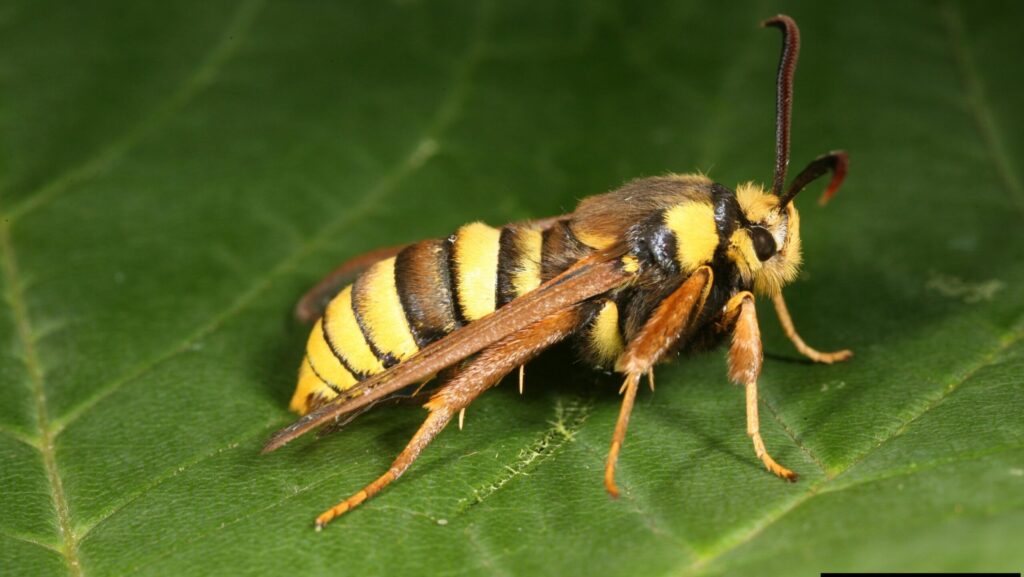Imagine walking through a summer garden when suddenly a massive hornet buzzes past your ear, its yellow and black stripes flashing as it hovers menacingly near your face. Your heart races, muscles tense, and you instinctively duck away from what appears to be a formidable stinger-wielding predator. But here’s the shocking twist: you’ve just been fooled by one of nature’s most masterful con artists. That terrifying “hornet” might actually be a completely harmless moth, wielding nothing more dangerous than a pair of fuzzy antennae and an Oscar-worthy performance.
The Great Deception Revealed
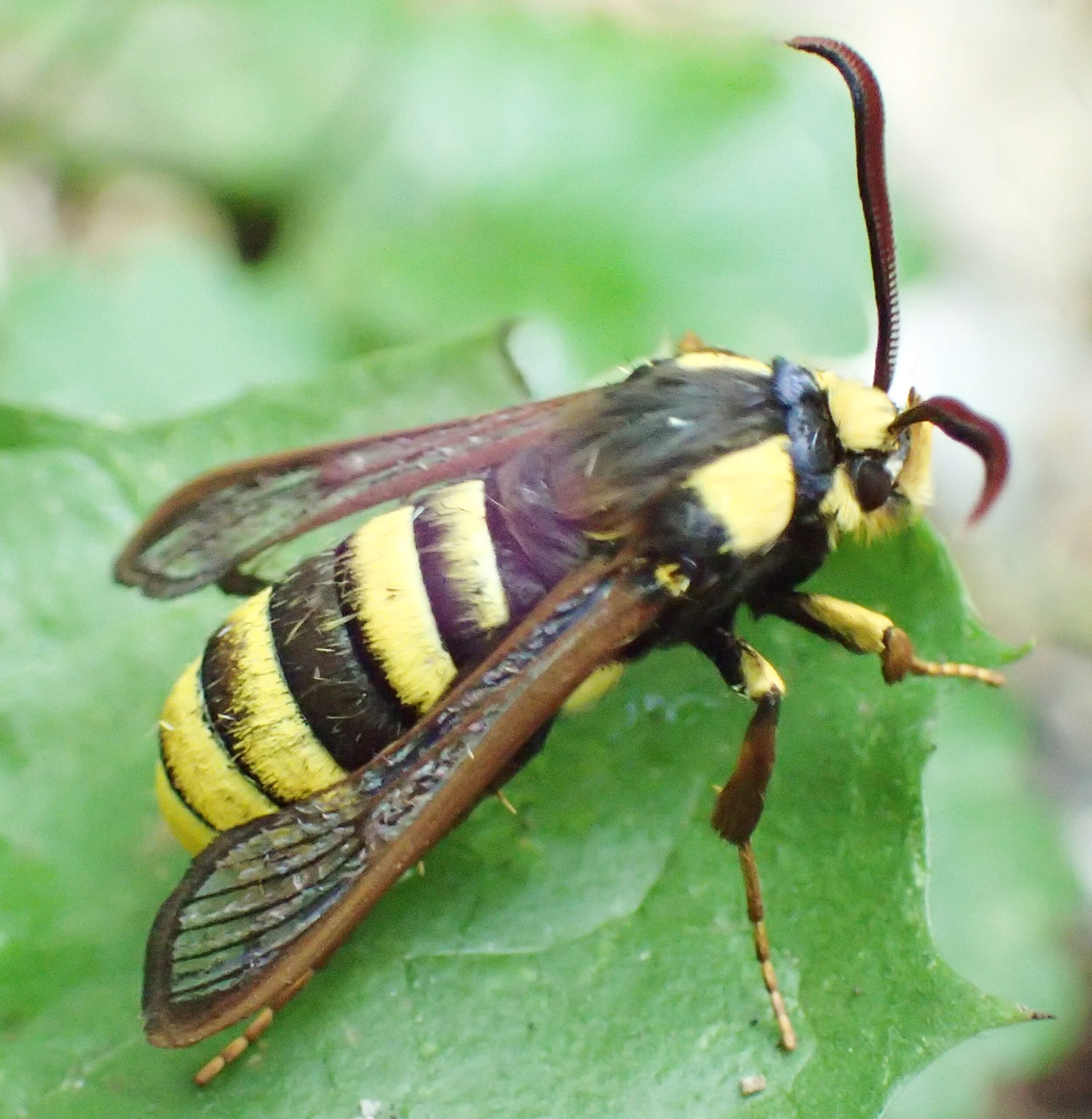
The hornet clearwing moth stands as one of nature’s most convincing impersonators, transforming from a vulnerable insect into an apparent threat through evolutionary wizardry. This remarkable creature has spent millions of years perfecting a disguise so convincing that even experienced entomologists can be momentarily fooled. The moth’s body bears the exact yellow and black banding pattern of a European hornet, complete with the robust appearance and aggressive flight pattern that makes predators think twice.
What makes this deception even more astonishing is the level of detail involved. The moth doesn’t just copy the colors—it mimics the hornet’s entire behavioral repertoire, from the way it holds its wings to the aggressive buzzing sound it produces during flight. This isn’t mere coincidence; it’s the result of countless generations of natural selection favoring those individuals who could best fool their predators.
Batesian Mimicry Explained

This incredible transformation represents a perfect example of Batesian mimicry, named after British naturalist Henry Walter Bates who first described the phenomenon in 1862. In this evolutionary strategy, a harmless species evolves to resemble a dangerous or unpalatable one, gaining protection without actually possessing any harmful qualities. The hornet moth is the “mimic,” while the European hornet serves as the “model” that provides the template for this elaborate disguise.
The concept works because predators learn to associate certain warning signals with danger or bad taste. When a bird gets stung by a hornet, it remembers those distinctive yellow and black stripes and avoids anything displaying similar patterns. The clever hornet moth exploits this learned behavior, essentially wearing a “keep away” costume that protects it from becoming someone’s lunch.
Evolution’s Masterpiece in Motion

The evolutionary journey that created the hornet moth’s disguise represents millions of years of incremental improvements, each generation slightly better at fooling predators than the last. Scientists believe this mimicry evolved through a process where moths with even slightly hornet-like features had better survival rates than their ordinary-looking relatives. Over countless generations, these small advantages accumulated into the near-perfect disguise we see today.
This evolutionary arms race created a feedback loop where better mimics survived to reproduce, passing their superior disguise genes to their offspring. The process was so successful that today’s hornet moths can fool not just predators, but also researchers who might initially mistake them for their dangerous counterparts. It’s like nature’s version of method acting, where the performer becomes so immersed in their role that they essentially become the character.
Anatomical Artistry

The hornet moth’s physical transformation goes far beyond simple color matching, involving intricate anatomical modifications that would make any special effects artist jealous. The moth’s wings have evolved transparent sections that create the illusion of hornet-like wing structure, while specialized scales produce the exact shade of yellow found on European hornets. Even the moth’s antennae have been modified to appear more hornet-like, trading the typical feathery moth antennae for straighter, more wasp-like appendages.
The body segments are perhaps the most impressive aspect of this disguise, with the moth’s thorax and abdomen displaying the precise banding pattern that makes hornets so recognizable. These aren’t just random stripes—they’re positioned exactly where a hornet’s markings would appear, creating a three-dimensional illusion that works from multiple angles. The moth even mimics the hornet’s narrow waist, achieved through specialized body positioning that creates the illusion of the classic wasp silhouette.
Behavioral Brilliance

Physical appearance alone wouldn’t make the hornet moth’s disguise complete without the accompanying behavioral performance that sells the illusion. These moths have evolved specific flight patterns that mirror those of aggressive hornets, including the characteristic hovering behavior and sudden directional changes that make hornets appear so threatening. They even buzz at frequencies similar to hornets, creating an auditory component to their deception.
The moths’ timing is equally crucial to their success, emerging during the same periods when hornets are most active. This synchronization ensures that their mimicry remains relevant and effective, appearing when predators are most likely to have recent memories of dangerous encounters with real hornets. It’s like showing up to a costume party dressed as the guest of honor—the disguise only works if people know what you’re supposed to be.
The Neurological Game
![The Neurological Game (image credits: [0370] Hornet Moth (Sesia apiformis) - Female closeup, CC BY 2.0, https://commons.wikimedia.org/w/index.php?curid=46076581)](https://insecthive.com/wp-content/uploads/2025/07/1751694690968_28037029_Hornet_Moth_28Sesia_apiformis29_-_Female_closeup_28739984400629.jpg)
The success of the hornet moth’s disguise relies on exploiting specific neurological pathways in predator brains, particularly the way visual processing systems categorize threats. Bird brains, for instance, have evolved rapid threat-detection systems that prioritize survival over accuracy, meaning they’d rather mistake a harmless moth for a dangerous hornet than risk getting stung. This cognitive bias works perfectly in the moth’s favor, as predators err on the side of caution when encountering anything that resembles a known threat.
Research has shown that this type of visual mimicry triggers what scientists call “peak shift” in predator recognition systems. Essentially, the moth’s exaggerated hornet-like features can actually appear more “hornet-like” to predators than actual hornets, making the disguise even more effective than the original. It’s similar to how caricatures can be more recognizable than photographs—by emphasizing key features, the moth becomes a super-stimulus that triggers an even stronger avoidance response.
Geographic Variations

Different populations of hornet moths across Europe have evolved subtle variations in their disguises, matching the specific hornet species found in their local environments. British hornet moths, for example, display slightly different markings than their French counterparts, reflecting the variations in their respective hornet models. This geographic specificity demonstrates the precision of evolutionary adaptation, with each population fine-tuning their disguise to match local conditions.
These regional differences also provide scientists with natural experiments for studying mimicry evolution. By comparing moth populations across different regions, researchers can observe how environmental pressures shape the development of these elaborate disguises. Some populations have even been found to mimic multiple hornet species, creating a more generalized disguise that works across broader geographic ranges.
Seasonal Synchronization
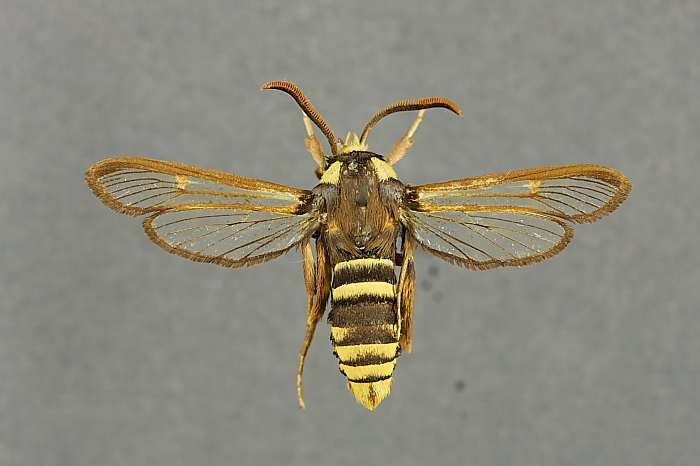
The hornet moth’s life cycle has evolved to synchronize perfectly with that of its hornet model, ensuring maximum effectiveness of the mimicry. The moths emerge as adults during peak hornet activity periods, when predators are most likely to have fresh memories of dangerous encounters with the real insects. This timing isn’t accidental—it’s the result of evolutionary pressure favoring individuals whose emergence coincided with periods of high hornet visibility.
The synchronization extends beyond just timing to include daily activity patterns as well. Hornet moths are most active during the same hours when hornets are typically foraging, further enhancing the believability of their disguise. This temporal mimicry adds another layer to their deception, ensuring that their performance appears on nature’s stage at precisely the right moment for maximum impact.
Predator Responses
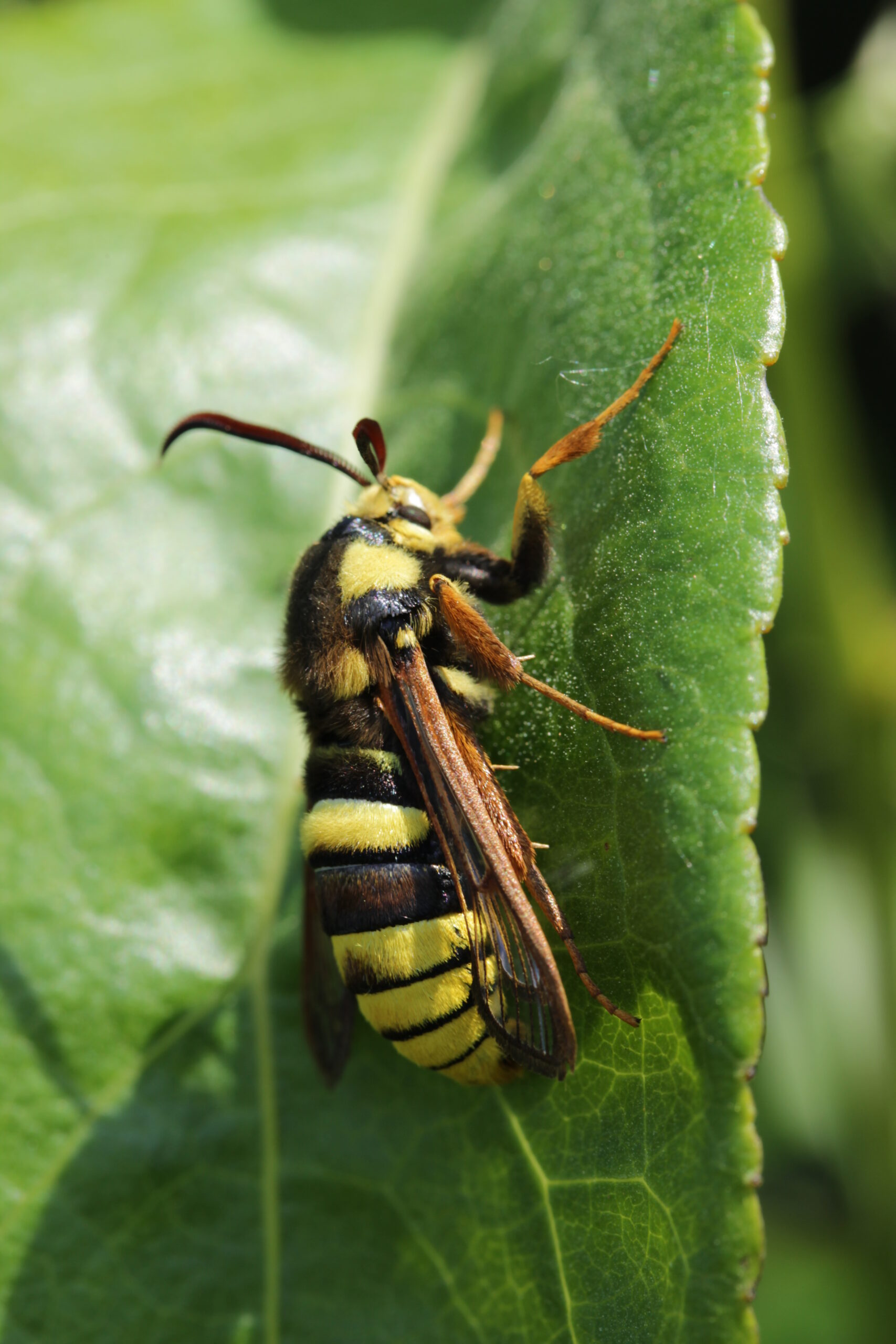
Scientific studies have documented fascinating predator responses to hornet moth mimicry, revealing just how effective this evolutionary strategy can be. Birds that have learned to avoid hornets show identical avoidance behaviors when encountering hornet moths, often flying away immediately or giving the moths a wide berth. Some predators even display stress behaviors like increased alertness or defensive posturing when encountering these convincing mimics.
The effectiveness isn’t limited to visual predators either. Spiders and other arthropod predators that typically rely on vibrations and chemical cues also show reduced predation rates on hornet moths compared to other moth species. This suggests that the mimicry extends beyond just visual appearance to include other sensory modalities, creating a multi-layered deception that works across different types of predators.
The Chemical Component
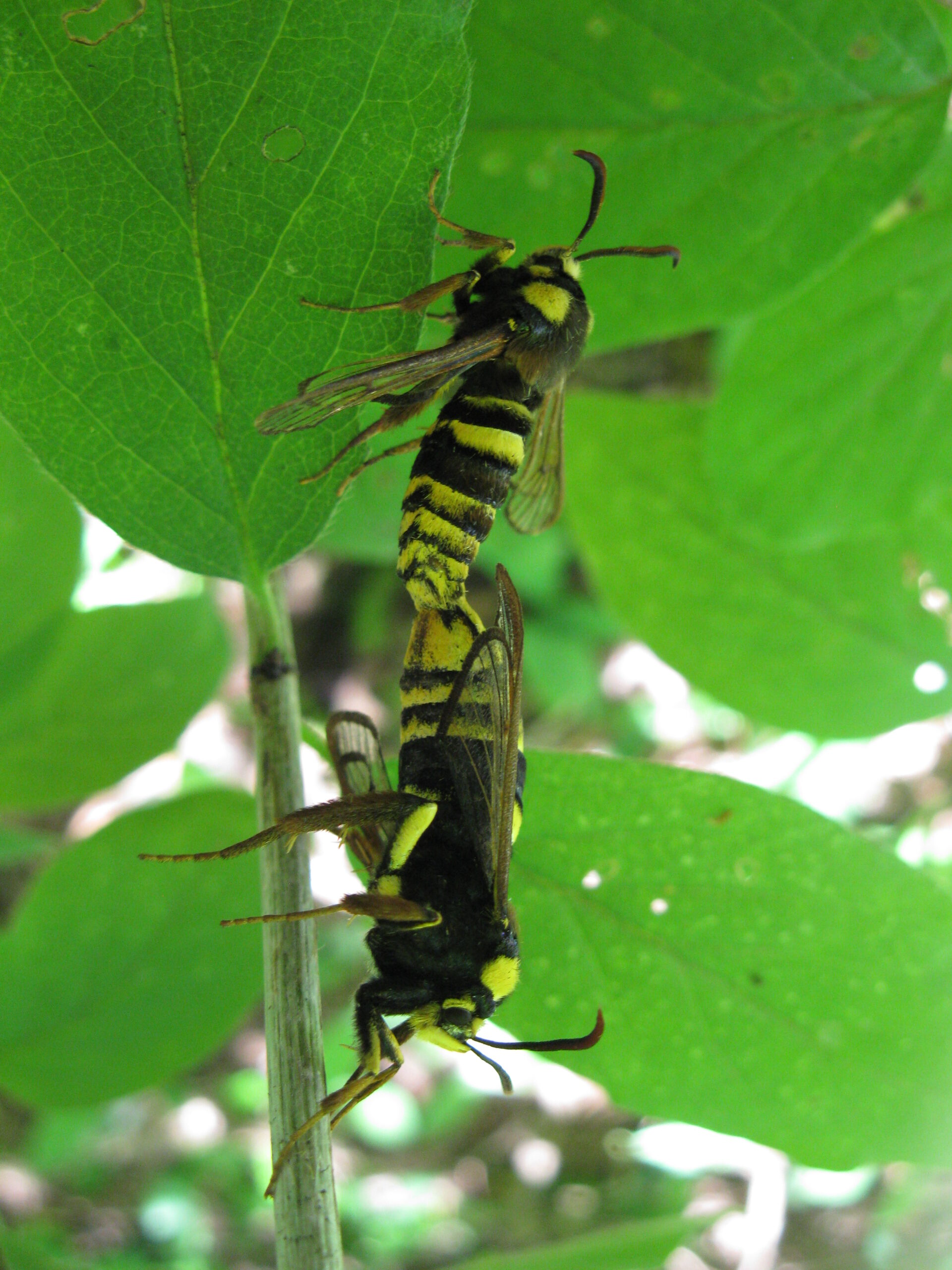
Recent research has uncovered that hornet moths may also employ chemical mimicry alongside their visual disguise, producing scent compounds that resemble those of hornets. These chemical signals, while subtle, add another dimension to their deception that helps fool predators with keen senses of smell. The moths’ ability to mimic not just the look but also the smell of hornets represents an even more sophisticated level of evolutionary adaptation.
The chemical mimicry appears to be particularly effective against mammalian predators, which rely heavily on scent for identifying potential threats. By producing compounds similar to hornet alarm pheromones, the moths can trigger avoidance responses even in situations where visual cues might be limited. This multi-sensory approach to mimicry demonstrates the comprehensive nature of evolutionary solutions to survival challenges.
Costs and Benefits

While the hornet moth’s disguise provides obvious survival benefits, maintaining such an elaborate deception comes with significant evolutionary costs. The energy required to produce the specialized wing scales, body patterns, and behavioral modifications represents a substantial investment that must be balanced against survival advantages. Some individuals even sacrifice reproductive success for better mimicry, as the resources devoted to disguise could otherwise be used for finding mates or producing offspring.
The balance between mimicry perfection and other life functions creates interesting trade-offs that shape the moth’s overall biology. Moths with the most convincing disguises might survive longer but produce fewer offspring, while those with less perfect mimicry might reproduce more successfully but face higher predation rates. This evolutionary balancing act helps explain why we see variation in mimicry quality even within the same population.
Modern Challenges

Climate change and habitat destruction pose new challenges to the hornet moth’s time-tested survival strategy, potentially disrupting the delicate synchronization between moth and hornet populations. As temperatures shift and flowering seasons change, the timing of moth emergence may fall out of sync with hornet activity, reducing the effectiveness of their mimicry. Urban development also fragments habitats, potentially separating moth populations from their hornet models and weakening the evolutionary pressure that maintains their disguise.
These environmental pressures are forcing scientists to reconsider how quickly evolutionary adaptations can respond to rapid environmental change. The hornet moth’s disguise took millions of years to perfect, but modern challenges are occurring over decades or centuries, potentially faster than evolutionary processes can adapt. This temporal mismatch raises important questions about the long-term viability of complex mimicry systems in our changing world.
Conservation Implications

The hornet moth’s survival depends not just on protecting the moths themselves, but also on preserving the hornet populations that serve as their models. This creates a unique conservation challenge where protecting one species requires maintaining the health of another, often very different species. Conservation efforts must therefore consider the entire mimicry system, including the predators that make the disguise necessary and the environmental conditions that keep all players in sync.
The interconnected nature of this system highlights the complexity of ecological relationships and the potential for unexpected consequences when species are removed from their natural contexts. Loss of hornet populations could render the moths’ elaborate disguise useless, while moth conservation efforts that ignore the broader ecological context might fail to address the underlying causes of population decline.
Future Research Directions

Scientists are now using advanced genetic techniques to uncover the molecular basis of hornet moth mimicry, identifying specific genes responsible for producing the colors, patterns, and behaviors that make the disguise so effective. This research could revolutionize our understanding of how complex traits evolve and provide insights into the genetic mechanisms underlying other forms of mimicry. The findings might even have practical applications in fields like materials science, where understanding natural camouflage could inspire new technologies.
Emerging technologies like high-speed cameras and chemical analysis equipment are also revealing previously unknown aspects of the moths’ deception. Researchers are discovering that the mimicry is even more sophisticated than previously thought, with subtle details that human observers had missed but that clearly influence predator behavior. These discoveries continue to amaze scientists and demonstrate that even well-studied examples of mimicry still hold surprising secrets.
The hornet moth’s extraordinary disguise represents one of evolution’s most impressive achievements, a testament to the power of natural selection to create solutions that seem almost too ingenious to be real. Through millions of years of refinement, these remarkable insects have perfected a survival strategy that depends on pure deception, transforming from vulnerable prey into apparent predators through nothing more than clever evolutionary theater. Their success challenges our understanding of the limits of biological adaptation and reminds us that nature’s creativity knows no bounds. What other masters of disguise might be hiding in plain sight, waiting for us to discover their secrets?

